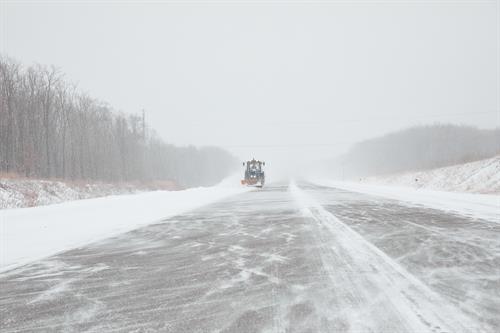
For most of the country, winter is upon us. Ice, snow and slick conditions are a problem and cause your drivers to face unpredictable challenges and weather-related hazards on their route. It’s important for them to plan ahead so they are prepared for worst-case scenarios.
They also need to know how to handle severe road conditions that accompany winter weather driving. Drivers have to battle reduced road friction, loss of vehicle maneuverability, travel delays and road closures, all of which increase their risk of crashing.
The riskiest time to be on the road is often right after it starts snowing or sleeting because road maintenance activities such as plowing snow or salting icy roads may not have started yet. Drivers should keep in mind that highways typically receive attention from road maintenance crews before local roads, which can remain dangerous for longer periods of time during winter storms. Snowplows and other road maintenance vehicles must be given plenty of space to do their job.
Make it a practice to regularly clean all mirrors and lights. Snow and ice buildup or road salt spray will greatly dim the brightness of lights and the ability to be seen by other drivers.
Drivers should dress appropriately for the winter by wearing loose-fitted, lightweight, warm clothing in several layers. They should always keep with them a hat that covers their ears, a heavy coat, and insulated waterproof gloves and boots. A good rule of thumb is to advise drivers to dress for the worst possible winter weather.
Remind your drivers of the following tips to keep safe this winter season:
- Perform a thorough pre-trip inspection, including the heater and defroster, before starting your trip.
- Slow down! Never drive faster than your vehicle has the ability to stop and maneuver in a controlled manner.
- Keep at least an eight-second following distance to allow more time to stop and maneuver.
- Never overestimate your vehicle’s ability to perform beyond its safety limitations or traction capability, or your driving ability.
- Drive defensively and look further down the road to anticipate emergencies.
- Avoid sudden turns, stops or accelerations.
- Be prepared for other motorists’ erratic and uncontrolled driving.
- Give snowplows and other road equipment plenty of room.
- Watch for ice and black ice, especially on bridges, overpasses and parking lots.
- Do not pass on or near a bridge or overpass, while on a curving road, near a railroad crossing, or as you approach or enter an intersection.
- Use extra caution on hills and be prepared to stop. Traffic may be backed up on the other side and the road may be slick.
- Do not take any unnecessary chances. If conditions are too dangerous to drive, pull off the road at the first safe location and contact your Dispatcher.
Categorized in:
-
Seasonal Driving Tips
-
Sharing the Road
-
Weather Conditions
ClickToAddCategories
No categories have been created yet.
Community
Company Updates
Driver Recruitment
Investor News
Transportation Safety
Claims
Driver Management
Driving Techniques
Distracted Driving
Seasonal Driving Tips
Sharing the Road
Health & Wellness
Injury Prevention
Regulations
Security & Cargo Theft
Vehicle Inspections
Weather Conditions
Workplace Safety
Workers Compensation
Done